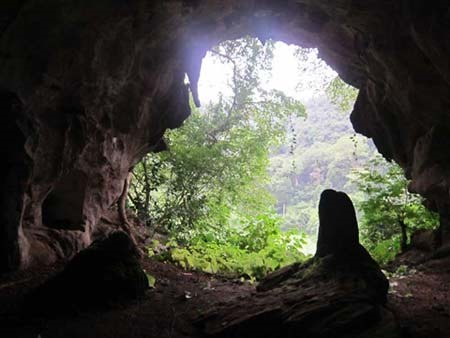 Life & Style
Life & Style

A cave displaying evidence of early people who lived 40,000-60,000 years ago in the central province of Thanh Hóa has been recognised as a national special relic site.
 |
| Con Moong Cave in Mọ Village, Thạch Thành District of Thanh Hóa Province, is among the sites with the most intact archaeological layers in Việt Nam, as well as in the entire Southeast Asia region. — Photo vnmedia.vn |
HÀ NỘI — A cave displaying evidence of early people who lived 40,000-60,000 years ago in the central province of Thanh Hóa has been recognised as a national special relic site.
Con Moong Cave in Mọ Village, Thạch Thành District of Thanh Hóa Province, was discovered in 1974 and has since been excavated many times.
Scientists have confirmed the site’s archaeological value, which offers a clear look at ancient Vietnamese people and their lifestyles.
The cave is among the sites with the most intact archaeological layers in Việt Nam, as well as in the entire Southeast Asia region.
An ongoing exhibition at Thạch Thành District’s Culture and Sports Centre showcases nearly 500 photos and objects featuring special discoveries from the cave and its vicinity.
Also, the Central Province of Phú Yên has received a National Intangible Heritage Certificate for its whale worship festival.
The festival is held between the third and eighth lunar month, which includes a ceremony, classical drama performance and folk games. — VNS









